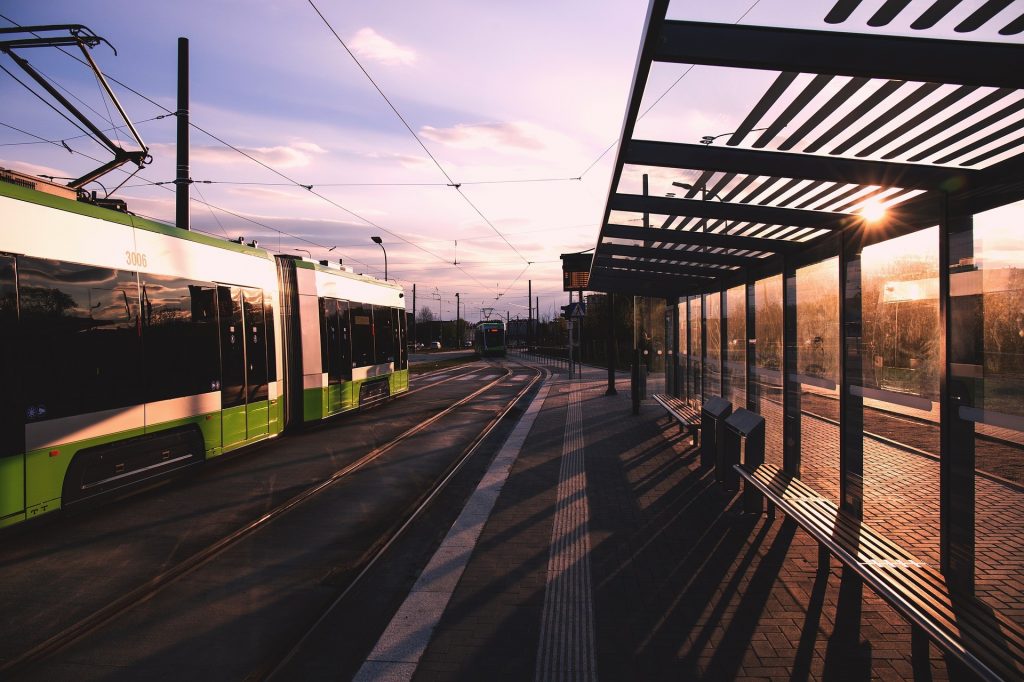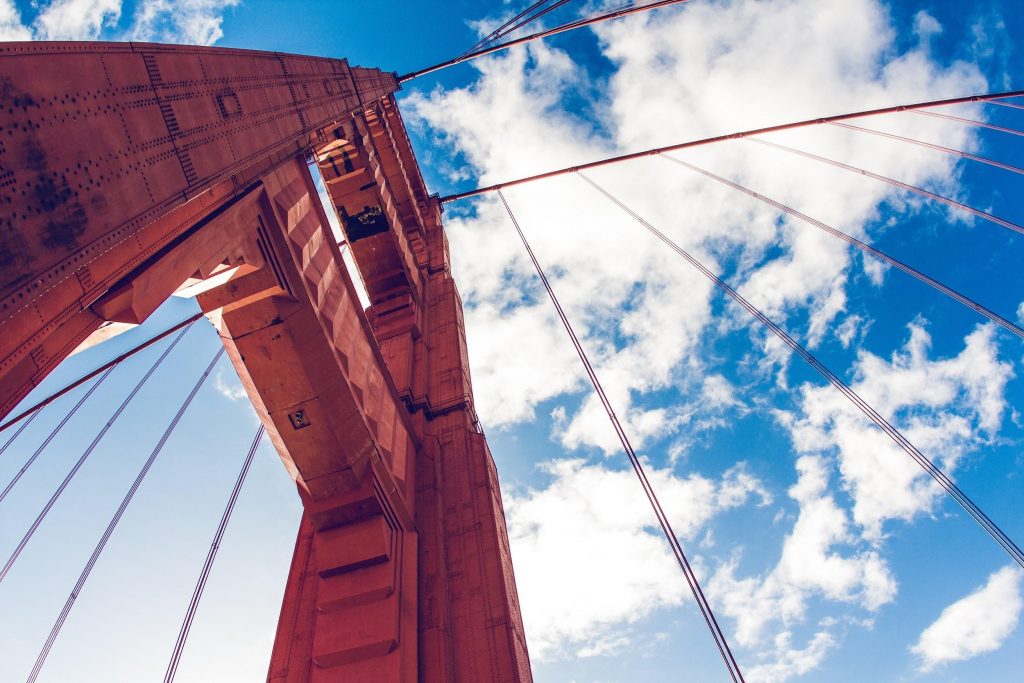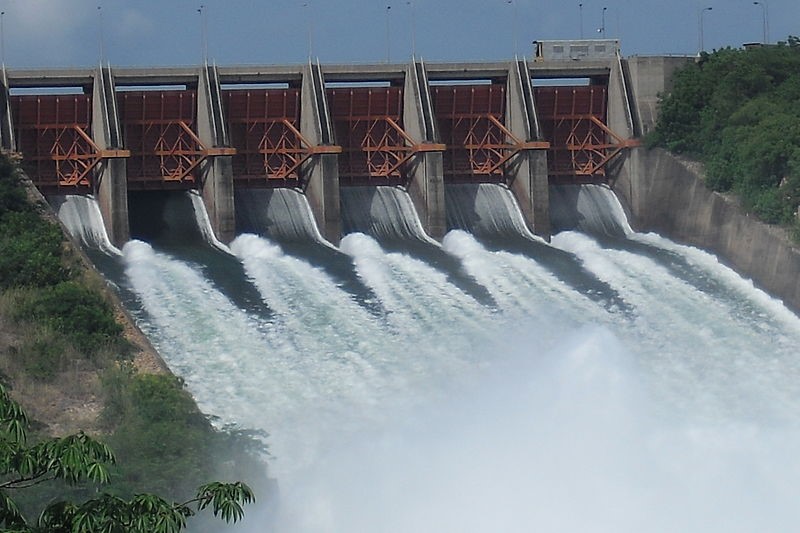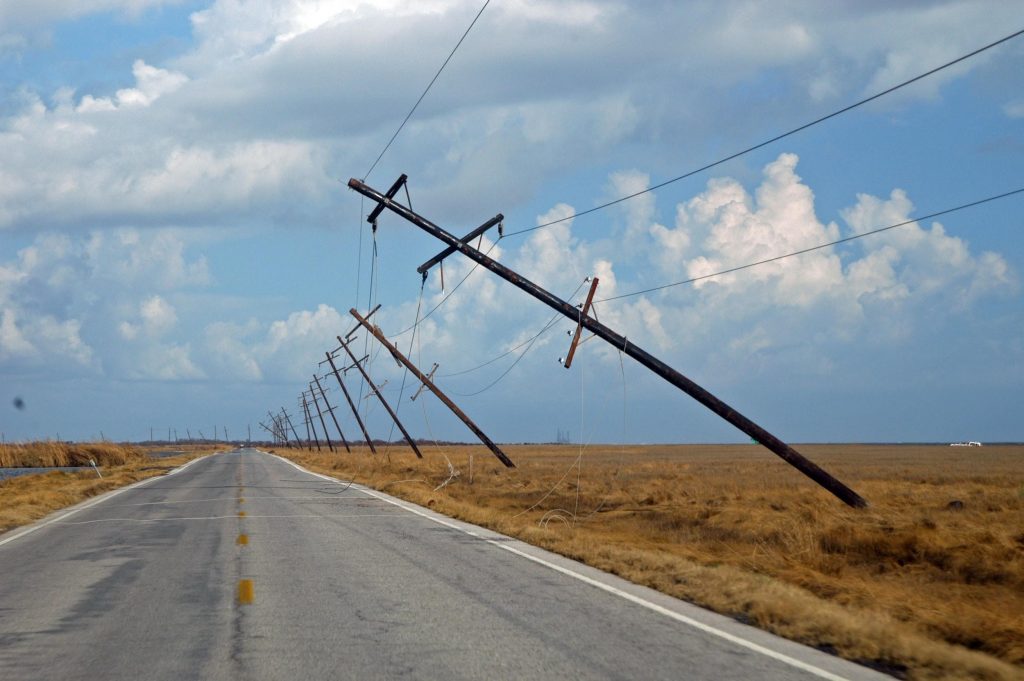InTrans / Jun 15, 2018
Transportation of Tomorrow: A call to infrastructure
Go! Magazine
 posted on June 15, 2018
posted on June 15, 2018
Whether you realize it or not, you interact with infrastructure on a daily basis.
Infrastructure includes important public structures that help us live our lives, like water, waste, and energy services. There is a lot of crossover between infrastructure and transportation, since transportation structures like roads, railways, subways, and airports are included under the umbrella of infrastructure too.
The implementation of some of our current infrastructure can be traced back to pivotal legislation in the development of the United States. Other infrastructure has been around even longer. All things considered, the current infrastructure could use a bit of an upgrade in the United States.
How infrastructure came to be
During the Great Depression, president Franklin D. Roosevelt implemented the New Deal. The New Deal was a series of programs to create jobs in the United States. Many involved the betterment or implementation of our nation’s infrastructure.

Going into the second half of the 20th century, some of our most important infrastructure—like our highways and bridges—were designed and implemented for defense purposes. In other words, the same highways we navigate our adventurous road trips on were originally built for national defense.
Dwight D. Eisenhower was the father of our modern interstate system, which was built to boost commerce and communications, though it was also an essential part of the national security strategy upon entering the atomic age. During his administration, Eisenhower signed the Federal-Aid Highway Act of 1956, which laid major groundwork for today’s interstate system.
Infrastructure report card
The American Society of Civil Engineers (ASCE) gives a “report card” that grades the infrastructure in the United States and it comes out every four years.

Aviation, bridges, dams, drinking water, energy, hazardous waste, island waterways, levees, ports, public parks, rail, roads, schools, transit, solid waste, and wastewater all receive a grade on the Report Card. Each component of infrastructure is graded with the following categories: capacity, condition, funding, future need, operation and maintenance, public safety, resilience, and innovation.
Such criteria advance questions like: “Does the infrastructure meet current and future demands?” “To what extent is the public’s’ safety jeopardized by the condition of the infrastructure?” “What could be the consequences of failure?” And perhaps most importantly: “What new and innovative techniques, materials, technologies, and delivery methods are being implemented to improve the infrastructure?”
The last report card was released in 2017—and in 2017, our nation’s infrastructure practically failed its tests across the board. America’s “cumulative infrastructure GPA” was a whopping D+. According to the report, a D grade means that the infrastructure is approaching the end of its service life; a large portion of the system exhibits significant deterioration, and the condition and capacity are of serious concern with a strong risk of failure.
Infrastructure in need: Bridges
Bridges in the US received a C+ rating from the report, with many bridges approaching the end of their design life.

The United States had 614,387 bridges in 2017, and about 40 percent of them were aged 50 years or older. In 2016, 56,007 of those bridges—or about 9 percent—were structurally deficient, meaning they required a significant amount of maintenance or repair, or need to be replaced entirely. What’s worse is that 188 million trips are made across structurally deficient bridges every day.
Infrastructure in need: Dams
Dams in the US received a D rating from the report.

Usually, we’re not as familiar with dams as we are with power lines or bridges, but they provide what have become essential services to our communities and economy. The report card states that the average age of the 90,000 dams in the country is 56 years old, and the overall number of high-hazard potential dams is increasing. The number of deficient high-hazard potential dams in the US has climbed to over 2,000.
Infrastructure in need: Energy
Energy received a D+ rating from the report.

Many of our energy systems in the United States predate the last 20 years, with most electric transmission and distribution lines having been constructed in the 50s and 60s. These systems only have a 50 year life expectancy. The report warns that without greater attention to aging equipment, capacity bottlenecks, increased demand, and climate impacts Americans will likely experience more frequent power interruptions.
The solution
All three of the reports agree that the solution to the problem is a large-scale investment in our nation’s infrastructure.
On the whole, the report shows that we haven’t been updating our infrastructure, and we haven’t done so for the last 50 years. As a consequence, our structures are deteriorating at a greater rate, and we need to act before it is too late. Failing to invest in much needed repairs means more expensive repairs later on and potentially catastrophic events.
So this is a call to improve infrastructure: a call to make an investment in one of our nation’s greatest assets, to rebuild the nation’s infrastructure, to boost the economy, and to create new jobs like other historic public works projects, such as the New Deal, have done in the past.
References
fhwa.dot.gov/infrastructure/originalintent.cfm
fhwa.dot.gov/programadmin/interstate.cfm
infrastructurereportcard.org/cat-item/bridges/
infrastructurereportcard.org/cat-item/dams/
infrastructurereportcard.org/cat-item/energy/
Related links
(Infographic) 2017 Infrastructure Report Card: infrastructurereportcard.org/the-impact/explore-infographics/surface-transportation-infrastructure/
By Hannah Postlethwait, Go! Staff Writer